Best time to travel anywhere and everywhere! A guide onseasons around the world.
Best Time to Visit Europe | When to Go (2022 Honest Guide)
In general, the best time to visit Europe is during the shoulder season. In most European countries the shoulder runs from mid-April to mid-June and again during the month of September. This is the best time to go for cheaper prices and fewer crowds, while still offering relatively decent weather.
Well, that’s the short answer anyway …
The long answer is much more complicated.
The truth is there are many “best times to travel to Europe,” and finding yours really depends on where in Europe you are going and what you are looking to do while you visit Europe.
I’ve traveled to Europe extensively. I’ve been to 35 countries across the continent (many of them multiple times) and I’ve taken trips backpacking Europe during every season.
I’ll break all that and more down in this detailed post on the best time to visit Europe.
Table of Contents
Disclosure: Travel Lemming is an independent reader-supported blog. You can support us by purchasing via the affiliate links on this page, which may earn us commissions. Thank you!
What is the Best Time to Visit Europe?
The best time to visit Europe is typically during the shoulder season. Europe’s spring shoulder season runs from mid-April to mid-June in most countries. The fall shoulder season is during September. During these times, crowds are thinner, prices still moderate, and the weather warm enough to enjoy your vacation.
Here is a table breaking down by month when to go to Europe for good prices, weather, and crowds:
| Prices | Weather | Crowds | |
| Jan, Feb, March* | Low | Cold (cool in Mediterranean) | Few |
| April, May | Moderate | Comfortable (often rainy & not quite beach weather) | Moderate |
| June, July, August | Very High | Warm to very hot | Very high |
| September, October | Moderate | Cool (bring a jacket) | Moderate |
| November, December* | Moderate | Cold (cool in Mediterranean) | Few |
*Note: Christmas market cities & ski towns will have higher prices & greater crowds during winter
As you can see, to me the sweet spots are during the shoulder season months before and after summer.
Europe is wonderful during the summer. The days are long and the nights warm. Europe’s capital cities come along, and its beaches become giant parties. You can have a lot of fun in Europe during the summer season.
But the entire world knows that …
And during summer Europe absolutely floods with tourists. Prices soar to more than double what they were just a couple months before, and many destinations (like overcrowded Santorini) become so over touristed that it can be hard to enjoy the experience among all the crowds.
But note that the above is generalizing for an entire continent, and there is a ton of variation by destination. Ireland is very different than Greece or Spain, for example.
To find the best time to travel to Europe for your situation, there are a few questions you need to ask yourself …
Need a Travel Backpack for Your Trip? Read my guide to travel backpacks for Europe to find out which one I recommend.
5 Questions to Decide When to Go to Europe

Me in Bratislava, Slovakia during my latest trip to Europe
The truth is that picking the best time to travel in Europe is largely a subjective thing. It’s going to be a bit different for every person, and there just isn’t ONE correct answer.
I wish I could just tell you something simple like “springtime in Europe is great” and end this post there. But, while springtime in Europe IS truly great, it’s not necessarily the best time to travel to Europe for everyone.
The first thing you need to do when deciding when to visit Europe is to ask yourself a few questions:
1. Where in Europe do you want to travel?

The Balkans are an affordable destination best visited in spring and fall (pictured: Prizren, Kosovo)
Europe might be one of the smallest continents, but it’s still got a huge diversity of climates. Traveling to Europe in December is going to be a very different experience in frigid Finland than it will be in the Mediterranean climate of Cyprus.
The bad news is this means it can require a little more specific research to find the best time to go to Europe for your specific destination. But the good news is that it means it’s always the best time to travel to Europe (or, at least, somewhere in Europe). So ask yourself this question because first because it might help narrow down your search a bit!
2. How important to you is the weather?

Romania can get a bit cold in winter!
To me, weather matters a lot. I was miserable in Prague in part because the weather was cold and rainy when I visited in October. By contrast, when I visited Madrid a few days later I loved it — undeniably in large part because of the pleasant weather.
I personally prefer to visit Europe when it’s warm but not too hot. Cold and snow make it hard for me to get outside, which is a big part of what I like to do when I travel.
But the high-summer heat in Europe can be overbearing and air conditioning just isn’t the norm in a lot of European accommodation (something I once complained about to the New York Times).
So all of that means that springtime or autumn are the best times to travel to Europe for me if I’m going to the Iberian peninsula, the Mediterranean, or the Balkans, while the middle of summer works well when I want to visit Scandinavia or the northern part of Europe.
3. Can you deal with crowds if it means visiting Europe at the best time?

Santorini is crowded in high season!
Guess what? You’re not the only one looking to figure out the best time to travel to Europe. Every year millions of tourists descend on the continent, and they all tend to congregate in the same places at the same times — especially during the summer, which is a great time to visit Croatia and other summer destinations if you want to fight crowds every step of the way.
Generally speaking, the high season for travel in Europe is from June until late August, with peak crowds around July . And although this is a great time of year to visit a lot of European destinations from a weather perspective, it can also mean the attractions become ridiculously overcrowded.
I felt like sardines when I was trying to take photos in Santorini, and the experienced soured me so much that I wrote a post telling people to skip visiting Santorini altogether!
4. How much does budget matter to you?

Paris great – but expensive during high season
Along with the high season crowds comes higher prices. Hotels and hostels can easily be double or even triple their low season prices during peak periods. So if you are looking to backpack Europe on a budget, you’ll have an easier go of it if you visit outside the peak periods.
Personally, I find that the shoulder seasons tend to offer the best combination of weather and value. Prices in much of Europe drop after Labor Day, when summer vacations end back in the States and many tourists go home to send their kids to school (or to go back to school themselves).
That all means that September is one of the best times to travel to Europe in my mind, as it’s still pleasantly warm on most of the continent but not too overpriced and overcrowded.
5. Do you want to attend any particular festivals or seasonal events?
You can’t experience Christmas markets in June and you can’t attend Oktoberfest in March (by the way, you can’t attend it in much of October either, as it often – and confusingly – falls primarily in September). So if attending a particular festival or cultural event is important to you, you’ll need to plan around that.
The same reasoning applies if you want to participate in a seasonal outdoor event. Want to go hiking in Germany? I guess you could do it in December, but you’ll have much more fun in June. And skiing the Alps is going to be kind of hard in July.
Resources to Help Find Your Best Time to Visit Europe
Researching Europe? Climate
When trying to figure out what a destination’s weather will be like, I’m a big fan of Wikipedia’s climate charts for cities.
For example, a Google search for “Budapest climate Wikipedia” will pull up this awesome chart that lets you quickly and easily get a feel for temperature, precipitation, and sunshine. You can then use that info to figure out your best time to explore the best things to do in Budapest.
Unfortunately, I have yet to find a page that aggregates all these charts together in a usable way, so for now, the best thing I can suggest is to simply run the above Google search for your potential destinations to figure out your best time to travel to Europe.
This site can also help give you a more general sense of climate in various areas, though I don’t find it as easy on the eyes as the Wikipedia charts.
Europe’s Peak, Shoulder, and Off-Peak Seasons
Generally speaking, Europe’s tourist seasons are as follows:
Peak season : June-August
Shoulder Season : April-May, September-October
Off Season : November-March (except in ski destinations, and except during Christmas-New Years period)
Note that the above chart will vary for some regions, especially in the Mediterranean. For instance, visiting Greece is possible year round if you’re not looking to swim. You can also visit Portugal any season.
Just realize your trip to Greece will feel a little different in the winter.
But the above is really just a very rough guide, and seasonality will vary a lot by destination. For example, I’ve found that a lot of Europe’s big northern cities like Amsterdam and Paris actually tend to empty out a bit in July and August, because locals take their holidays and head south in search of beaches and sun.
If you’re a statistics-minded person, you might find this chart helpful as it shows the distribution of tourists for each country by month of the year.
Events and Festivals in Europe
You can find lists of some of Europe’s most popular special events and festivals here.
I personally really want to go back to Amsterdam to experience King’s Day in April!
Tips for Travel to Europe
One last thing before you go: if you’re on a tight budget for Europe trip, check out my tips for traveling Europe cheaply. And I’ve also got a guide to how to choose the best backpack for travel in Europe.
FAQs About When to Travel Europe
What is the best month to go to Europe?
The best month to go to Europe is September. Europe’s weather is still pleasant but the crowds and prices are much lower in September.
What is the cheapest month to travel to Europe?
The cheapest months to travel to Europe are November, January, February and March. The weather is cold so, outside of ski destinations, the winter season tends to have few crowds and discount prices.
What is the cheapest country in Europe to visit?
The cheapest countries in Europe to visit include Kosovo, Bulgaria, Georgia, Romania, and Albania. In general, Eastern European countries tend to be significantly more affordable than Western European countries.
That’s it for this guide to the best seasons, months, and times to visit Europe. I hope this helped you find YOUR best time to visit Europe!
How useful was this post?
Click on a star to rate (you can leave feedback after clicking submit)
Help us help you travel better!
Your feedback really helps .
What did you like about this post? Or how can we improve it to help you travel better?
When’s the best season to travel to european countries
Ready for your next adventure, but not quite sure if it’s the best time to travel to your chosen destination? We’ve got you covered. In this article, we’ll take a look at:
- Tourism seasons: High season, low season and shoulder season.
- The best time to visit different regions, namely:
- Europe
- The USA
- The Middle East
- North Africa
- South Africa
There’s a great, big world out there just waiting to be explored, and all sorts of climates that go along with it. Furthermore – you can experience wholly different climates within one country at the same time of year, depending on the regions you visit.
If you’re feeling a little overwhelmed by the sheer variety of destinations on offer, a simple way to narrow down your options is to decide what kind of weather you want to enjoy while on vacation.
After all, the weather plays a role in everything from how you experience a given destination, to the food you eat and the activities available at a certain time of year. Whether you prefer a warm holiday or a snowy vacation, the perfect destination for you is out there.
We’ve had a look at when the best time is to travel to some of the most popular destinations. Read on to find the best travelling seasons for a list of our top locations, and choose the one for you.

Stopping to capture the moment
Picking the best time to visit according to tourism seasons
Each travel destination will have its tourist seasons. These seasons are usually divided into high (peak) season, shoulder season, and low season. Deciding where to go at what time of the year will usually rely heavily on which season you prefer to travel in. Have a look at the pros and cons of each tourist season below.
High season
This is the busiest time for tourism. Usually when the country is experiencing its best weather, high season – or peak season – brings busy crowds and high rates. This can often give it a bad reputation, and many seasoned travellers will avoid travelling during high season to avoid the crowds.
However, depending on your vacation or destination of choice, the high season can be the best time to visit. You’ll see the best weather, meet loads of other travellers, and possibly even experience better service since hospitality staff are very geared up to serve visitors.
High season is the perfect time to travel for those who want the full tourist experience of a destination. If you are willing to pay the demanded price tags, don’t mind sharing attractions with plenty of other tourists, and want ideal vacation weather, high season is your best travelling option.
Important to note : The best weather will depend on the country. For instance, Switzerland’s high season falls in winter , which is the best time for tourists to enjoy skiing in the Alps. On the other hand, Hawaii’s high season will be in summer, making it the best time to travel to enjoy its amazing beaches.
Skiing in Switzerland
Low season is the exact opposite of high season. During this time, very few tourists are around, and prices for those who do visit are usually considerably lower. However, the shorter lines and cheaper rates do come with a different expense…
For most destinations, the low season means unfavourable weather, fewer touristy activities, and in some instances, fewer accommodation options and transport options. In some locations, resorts and hotels will close during low season, hospitality staff may be less attentive, and flights may be fewer and further between.
Low season doesn’t appeal to everyone. But for those who are happy to deal with alternate weather, and are looking for a peaceful holiday , it can be the perfect time to travel .

Fewer people around popular landmarks such as the Beatles statue
Shoulder season
Often the forgotten season, shoulder season can save you money , and give you a fantastic trip. Shoulder season is the season in between high and low season. This usually falls in and around spring and autumn .
Many people don’t think about the shoulder season when looking to book their trips. But it is often the best time to visit anywhere. If you go right after high season, you’ll find many of the tourist attractions still open, without the long queues and crowds.
Visiting soon after the low season can also be a great option, since you’ll likely find still-low prices, as the weather begins to warm up, and the crowds have not yet arrived.
This season can sometimes mean unpredictable weather patterns, though, so packing correctly for shoulder season is an important task!

Packing preparations
Great times to travel to the best destinations
Now that the tourist seasons make a bit more sense, where should you plan your next trip to? Each country has its own unique season, and some are perfect holiday destinations year-round. Have a look at the destinations below, and see their best tourist times, and what to expect from each.
Best Time to Go to Europe
High season in Europe is usually summertime. The months of July and August are the hottest, and most European countries experience their busiest times during these months. This is also due to summer school holidays in Europe, making it prime time for travelling and local families alike.
Low season falls in winter in most of Europe, so you’ll find great deals on accommodation and experiences. However, you’ll also get limited daytime hours, so you’ll need to plan your outings accordingly. Winter in Western Europe is usually full of magical experiences and great travel deals, making it the best time to go to any of these countries for some.
Shoulder season weather in Europe is fickle. Depending on where you’re headed, you may encounter snow, rain, or sunny days on end. The one big advantage is that you’ll enjoy a more authentic travel experience.
There are fewer tourists around, and the locals are going about their day without the hassle of holiday crowds, so you’ll be able to merge seamlessly with the fabric of their everyday life. If you do want a shot at warmer temperatures, opt for destinations in Southern Europe , like Spain, Portugal, Croatia or Italy.
Still not sure about the best season to visit Europe? Have a look at our Europe season guide and get all the info you need.
Summer in Paris, France
When to travel to the USA
The USA is vast. The climate ranges from one state to the next, but summer tends to be high season no matter where you go.
As such, attractions like the Statue of Liberty and Central Park, as well as national parks like Yellowstone and Yosemite, tend to be pretty crowded. You’re also likely to pay high season entry rates wherever you travel.
June to August is a very popular season with travellers since the days are warm across the country. During these months, the southern states like Texas and Florida are hot and even slightly tropical, while the northern states like New York and Washington experience warm days and cooler evenings.
Winter in the USA runs from November to March, and (as with summer) prevailing conditions differ from one state to the next. The southern states don’t dip too low in terms of temperature, so you’ll be able to explore with a few light layers and a parka. In the north, however, things tend to get quite wet and snowy.
You’ll also enjoy low season rates everywhere, apart from ski resorts and warmer getaway spots (score!). Larger cities like Chicago and New York embrace the cold weather with winter events and festivals, so there is plenty to see, do and enjoy, no matter how cold it gets!
Shoulder season in the USA is synonymous with fewer crowds and milder temperatures. It is often the best time to tick off some of your American landmarks bucket list spots.
Springtime brings blossoms, and fall is quite spectacular, especially in the New England region, where the golden and amber hues of the changing leaves attract visitors from far and wide.
Green spaces in cities like NY and Washington also put on quite the show. Hawaii stays balmy and tropical for large parts of the shoulder season, so if you want some sand and surf you can still enjoy fine temperatures on the island.

Times Square, New York
Best time of the year to travel to the Middle East: Israel, Jordan, Turkey.
Shoulder season in the middle east is during the summer months. The period between June and August is a water lover’s paradise in countries like Israel and Jordan . Turkey’s summer offers fantastic coastal temperatures, but inland the heat can be stifling.
During high season, the beaches in these countries bustle with visitors who flock here to take advantage of the wonderful weather and waterside attractions like beach bars, etc. It’s also prime time for water sports like skiing and snorkelling. It’s best to stay close to the coast, however, so that you can find relief from the heat in the cool seas.
Winter in the middle east is the official low season, but can still be a great time to visit. Turkey in winter still provides many tourist opportunities, including scenic skiing, and a chance to attend the well-known Whirling Dervish Festival .
Israel’s winter consists of heavy rainfall and cold temperatures and is not often enjoyed by tourists. Jordan, however, offers some amazing hiking opportunities during winter, and if you are dressed warm, it’s quite enjoyable.
Shoulder season means fair temperatures and excellent sightseeing opportunities throughout the middle east. This is the prime time to view the ancient heritage of Turkey’s inland towns and cities. There are also many festivals happening in Turkey’s shoulder season , as well as fantastic activities on offer.
For Israel and Jordan, the shoulder season can sometimes be just as busy – if not more – as the high season. This is because the relief from the smothering heat offers better opportunities to enjoy popular landmarks. This can mean that prices are not as low as would be expected, but it’s definitely a worthwhile time to visit.

Hot air balloons in Cappadocia, Turkey
When to go to North Africa: Egypt
Egypt’s high season falls between the winter and spring months of October to February. Temperatures are warm, but not too hot, and this draws in large crowds. Days are usually a comfortable warmth, while nights become a bit colder. You can expect Egypt to be busy during these months, and prices to be quite costly.
Low season in Egypt is usually between May and October. These are the summer months and tend to be extremely hot. Young children and older travellers seldom fare well at these types of temperatures, so perhaps schedule a visit to Egypt at a cooler time of year if you want to avoid the sweaty season.
However, if you don’t mind the extreme heat, you could still enjoy some summer travelling through Egypt. There are some great opportunities to take advantage of during these months, such as scuba diving in the red sea, browsing the cool, air-conditioned museums in Cairo, and a sunset visit to the pyramids on a camel.
February to May is considered the shoulder season months in Egypt. The weather is still quite pleasant but can be fickle at times. From March to April “The Khamsin wind ” season runs, bringing hot winds that disturb the desert sands, and create an adventurous atmosphere! This season doesn’t see many travellers arriving in Egypt, so you’re sure to have a peaceful visit if you travel during this time.

Ruins of Karnak Temple in Luxor, Egypt
Best time of the year to visit South Africa
Even though South Africa’s climate is usually enjoyable year-round, high season is considered to be in the summer months. This is the best time to partake in the many outdoor adventures and activities that the country has to offer.
Whether you want to go hiking in the Knysna woods, visit an ostrich farm in the Karoo, or try your hand at surfing in the Eastern Cape, this is an excellent time to do it. The country falls across a few longitudinal sectors. So you’ll find that Cape Town and its surrounds are dry and hot, while Gauteng and the safari destinations towards east experience summer showers. The weather around the coast tends to be pleasant and temperate.
While the low season for the entire country falls in winter, this is the southern hemisphere winter. As such weather is cooler than at other times of the year, making for pleasant days and chilly nights.
There are still plenty of things to do and places to visit in the major cities, and the temperatures seldom deter sightseeing tourists. The majority of the hotels in the country stay open for the winter months, but you can expect to find cheaper deals on accommodation, transport and activities. This means winter is still a great time to go .
Shoulder season in sunny South Africa is less obvious than in other places. The country has such mild weather that spring and autumn in places like Cape Town can actually feel like full-blown summer in Europe.
However, as with the rest of the globe, the weather tends to be a little capricious, but if you go prepared with a waterproof jacket and plenty of light layers, you’ll do fine. These in-between seasons are also ideal for animal encounters. Safari destinations like the Kruger National Park have more wildlife sightings since many species are calving and tend to stick closer to food and water sources.
If you’re still not sure when to visit this sunny country, read our full guide on the seasons and climate in South Africa .

Cape Town, South Africa
There you have it – a concise guide to when to travel where if you’re planning your holiday according to the seasons. You should now have an answer to “ when is the best time to visit? ” your favourite destinations. As well as a clear idea of where you should head to next.
We hope this has answered many of your travel questions , such as where to go, when to go, and what to expect when you get there. Now, all that’s left to do is book your tour, pack your bags , and mark your calendars.
A good thing to remember is that our Expat tours are scheduled during the best times to visit each location. So we do the thinking and you just need to join and enjoy!
Best Time to Visit Europe 2022/2023
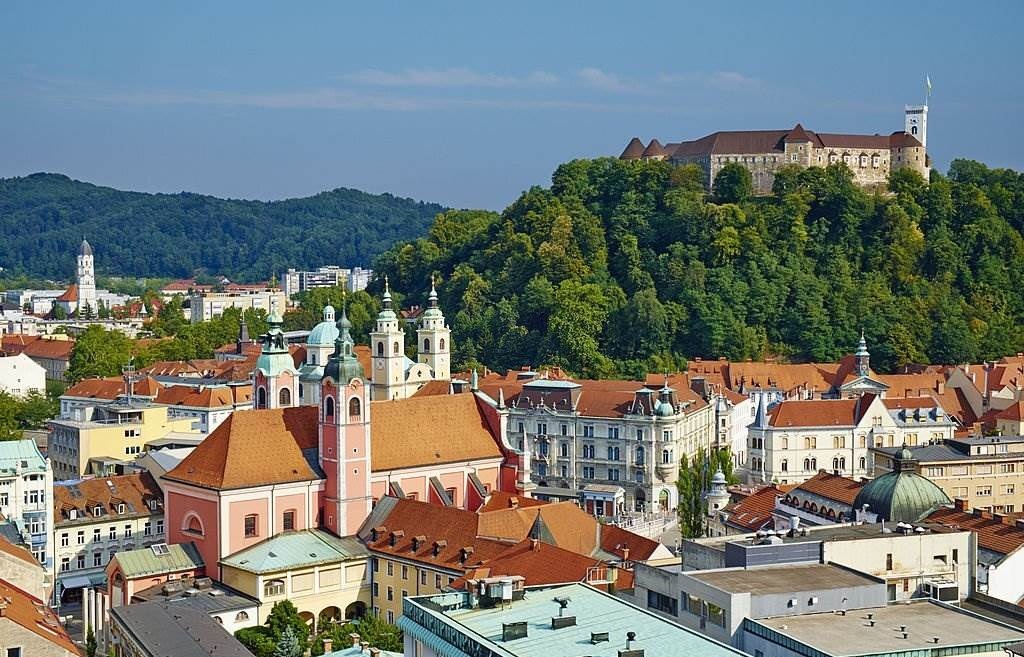
Slovenia, Ljubljana, cityscape with Franciscan church, Saint Nicholas church and the Castle – Best Time to Visit Europe
Europe welcomes visitors throughout the year, and each season has a unique atmosphere and experience. Character seasons of tourism in Europe which can be divided into three seasons: The peak season starts from mid-June to August. The middle season starts from April to mid-June, and from September to October. Off-Season starts from November to March, and every season of the three has its advantages and disadvantages features. In this article, we will discuss all the important details about what is the best time to visit Europe updated to 2022/2023, so let’s start with tourism season types in Europe.
Tourism Seasons Types in Europe and the Best for Travel
1-Peak Season
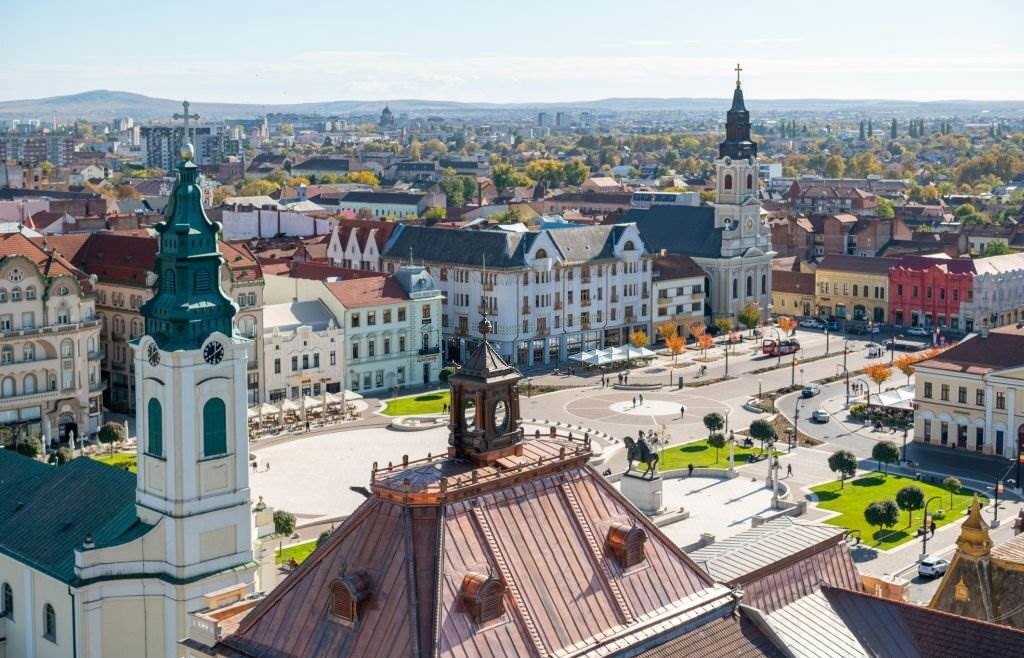
Oradea Aerial view from the city hall tower over Oradea town center with historic buildings and churches – Best Time to Visit Europe
Definitely, summer is the best time to travel and enjoy holidays except for large crowds, high temperatures, sunny weather, and days long. Most type of travelers during this season is families with school-age children they have choices only during the summer peak season for travel, so when you decide to travel during this season you should consider that there will be many crowds and enjoy the places as early as you can before you get crowded or late after the low crowds. You should keep in mind that prices will be higher than normal during the high season, especially at tourist attractions and beaches.
During the high season, popular tourist destinations in Europe are better to visit at night, especially large tourist resorts because they are quieter and less crowded at night, but there are many places where the best time to explore them is during the high season like the countries of Britain and Ireland.
Here Are Some Tips While Visiting Europe in the High Season:
1-Arrange Your Trip

Arrange Your Trip to Europe – Best Time to Visit Europe
Go as early or as late as possible to the busy places in peak season, Consider, for example, a six-week European tour starting on June 1, half of which is a railcard to see the famous sights of Austria and Italy, and the other half to visit relatives in Scotland. It would be of wisdom to take the railway traffic department first, enjoy fewer crowds, Then spend some time with your family during the last half of your vacation when Salzburg and Florence are full of tourists. Salzburg is completely different on June 10 from Salzburg on June 10 July.
2-Spending the Night
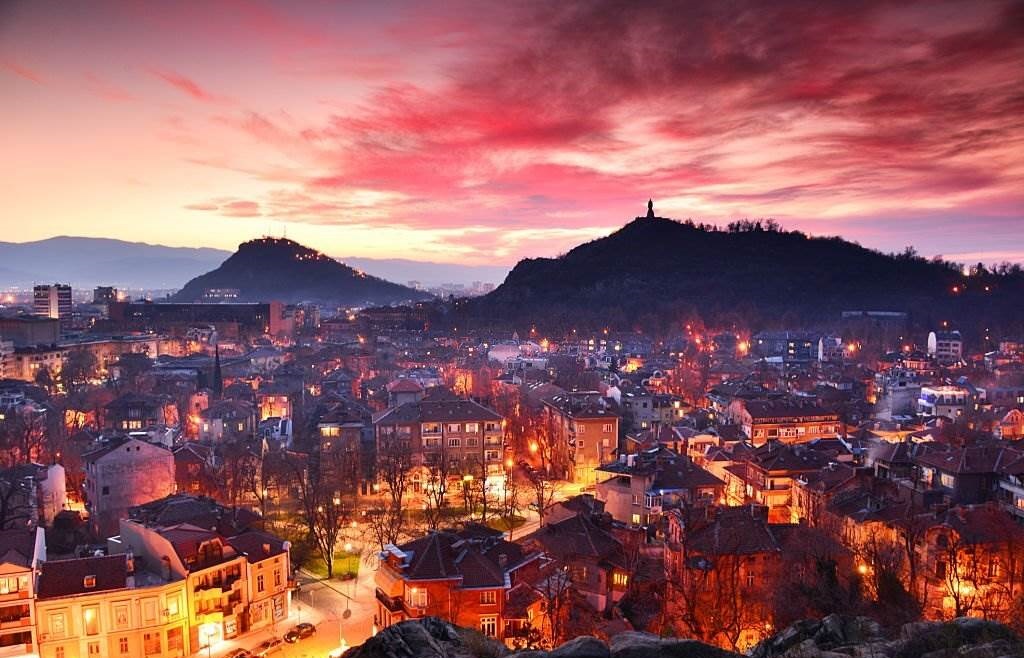
Night view of Plovdiv hills with Aliosha statue, Eastern Europe, Balkan peninsula, Bulgaria – Best Time to Visit Europe
Day trip destinations near major cities and resorts take a more peaceful and enjoyable night out such as San Marino (close to Italy’s huge beach resorts), Toledo (near Madrid), and San Gimignano (near Florence), Travelers retreat to the expected plumbing in their large cities or beach resort hotels.
Small towns usually lack large enough hotels for tourist groups and often cannot be reached by large buses. So, at worst, they face crowds in the middle of the day. Similarly, popular destinations for cruise ships, such as Dubrovnik and Venice are crowded during the day, but more affordable at night, when crowds of cruise ships sail.
3-Prepare for Extreme Heat
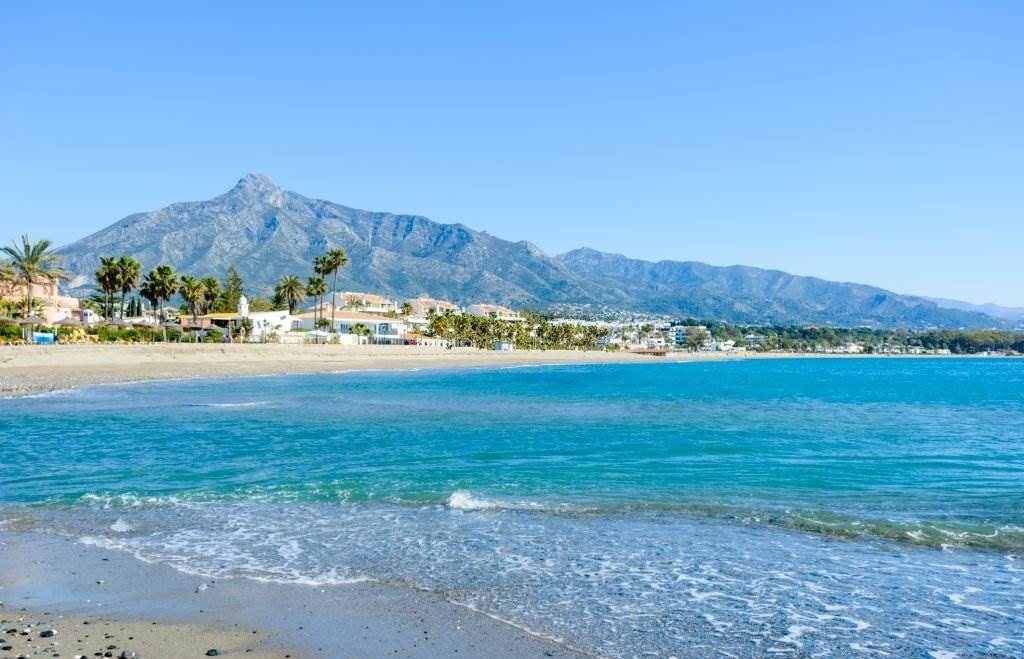
Rio Verde Beach in Marbella, Malaga, Spain – Best Time to Visit Europe
Europeans say that the weather gets hotter each year. Even restaurants in cold climates such as (Munich or Amsterdam) now tend to have wide outdoor seating to benefit from the longest open-air dining season, Expect high temperatures in July and August throughout Europe, especially in the south.
4-Do Not Exclude July and August
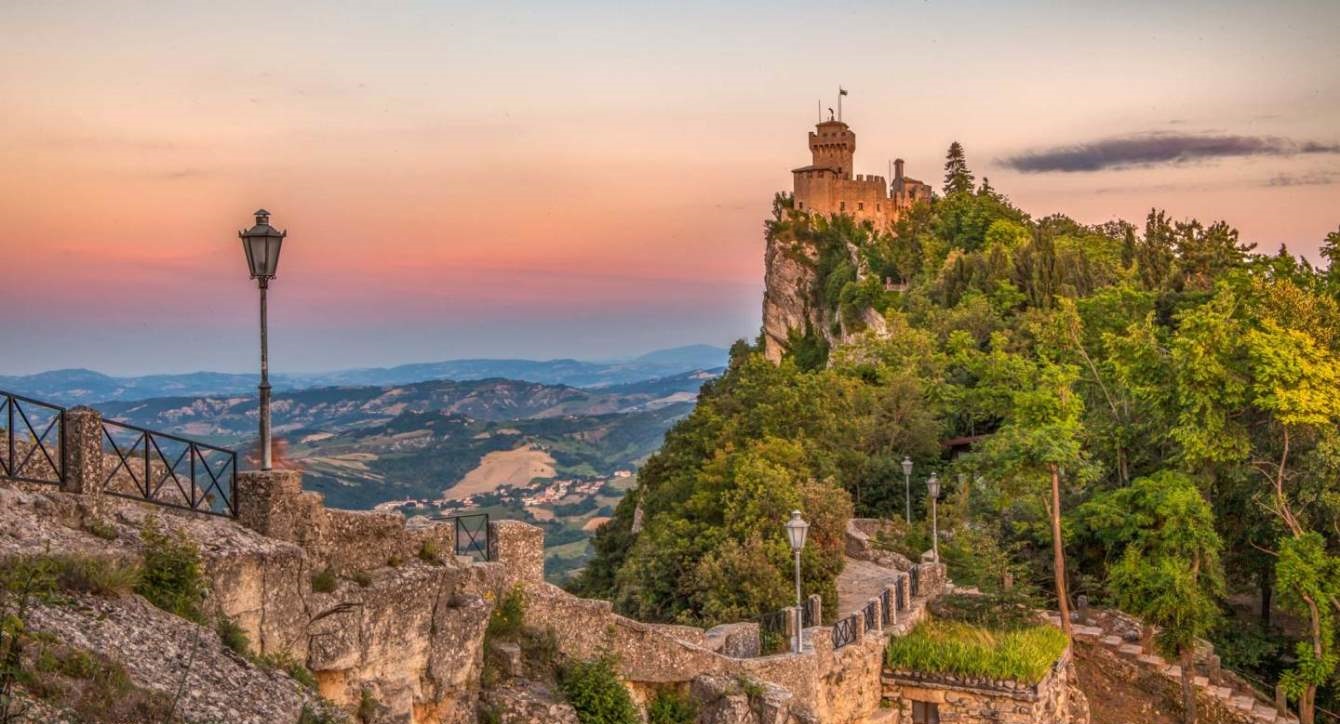
Spending the Night – Three Towers of San Marino – Best Time to Visit Europe
Although crowds of tourists in Europe can be charged on a bell curve that peaked in July and August, there are exemptions. For example, Paris is comparatively empty in July and August but fully packed in June and September for trade fairs and conferences. In summer, the prices of business class hotels in Scandinavia fall when business trips there fall.
In most parts of Europe (especially France and Italy), the cities were partially closed in July and August, when local city residents take their holidays on the beach. You will hear that these are hard times to travel, but they are not a big problem.
5-It’s Best to Try Some Places in Europe During the High Season
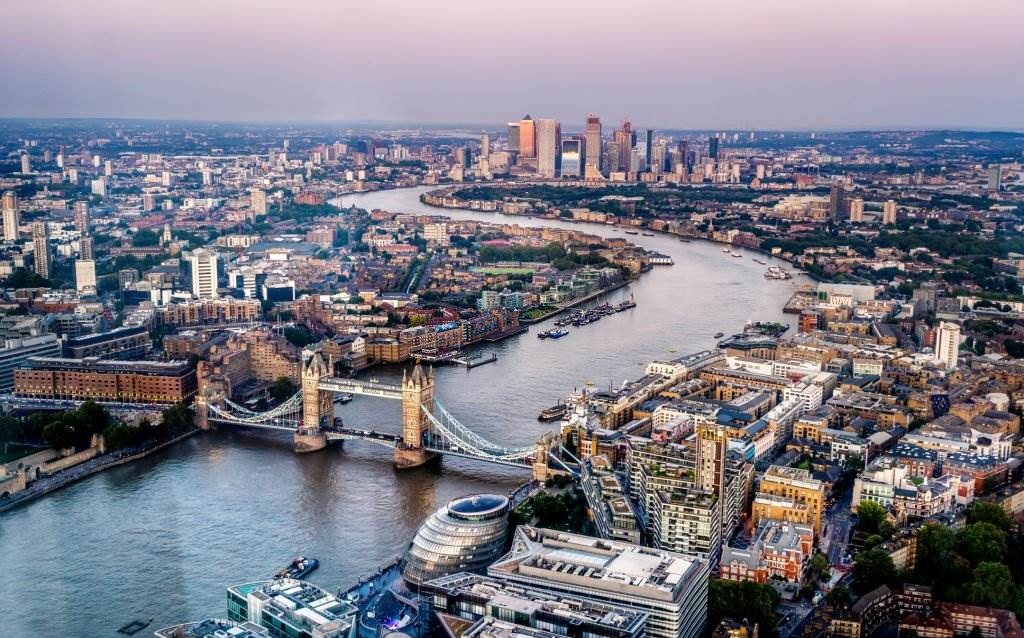
City of London skyline – Best Time to Visit Europe
Travel during the high season in the Scandinavian countries, Britain and Ireland, where the longest possible days and the best weather, where the terrible crowds have taken to other destinations, and the sights are closed in the shoulder season. The Scandinavian countries have a very short tourist season, from mid-June to late August.
2-Middle Season
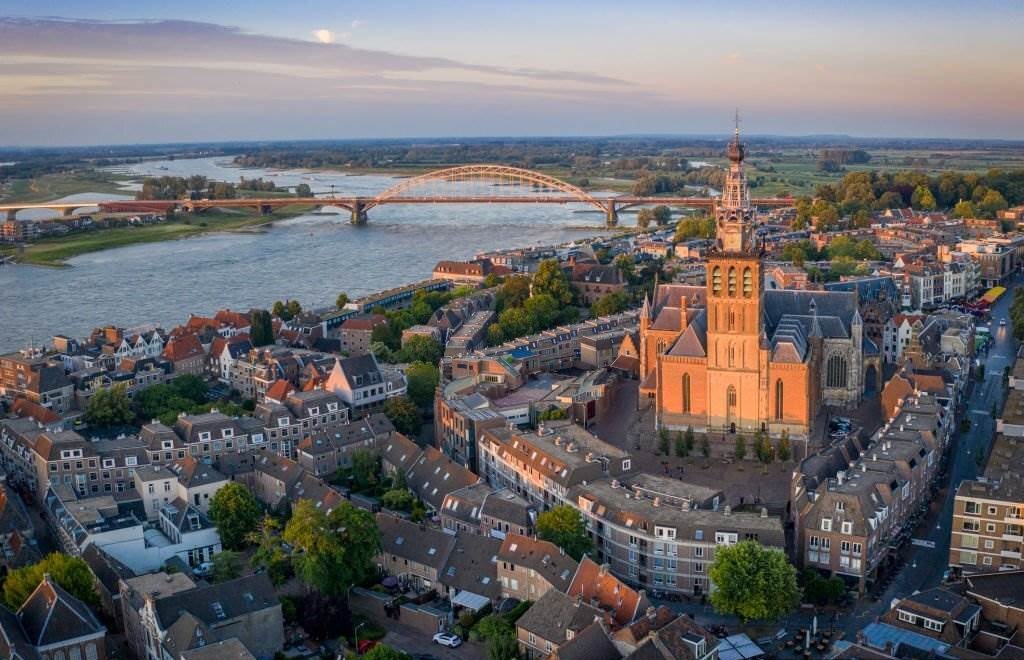
Netherlands, Gelderland, Nijmegen, Aerial view of Saint Stephens Church and surrounding buildings at dusk – Best Time to Visit Europe
This season combines the advantages of the high season with the off-season, where you will enjoy nice weather, the day is long enough, crowds are less and there is a lot of entertainment and there is a lot of enjoyment in the atmosphere.
This season varies depending on the weather because autumn and spring bring down temperatures in the Mediterranean region of Europe and especially in Italy, southern France, Spain, Croatia, and Greece but you may choose to travel in autumn or spring. We can tell you that the weather and the crowds are not very different in spring and fall, but in the Mediterranean countries, it is greener in spring but dry in autumn, The Alps are also better in the early fall and Hiking trails are still covered snow in late spring and early fall.
Tips for the Middle Season:
1-The Middle Season Varies by Destination

Beautiful Girl in berlin cathedral – Best Time to Visit Europe
Spring and Autumn bring cool temperatures in the Mediterranean area, this season in most parts of Italy, Spain, Southern France, Greece, and Croatia could be the crowd increases and prices in the high season.
3-Spring or Autumn?
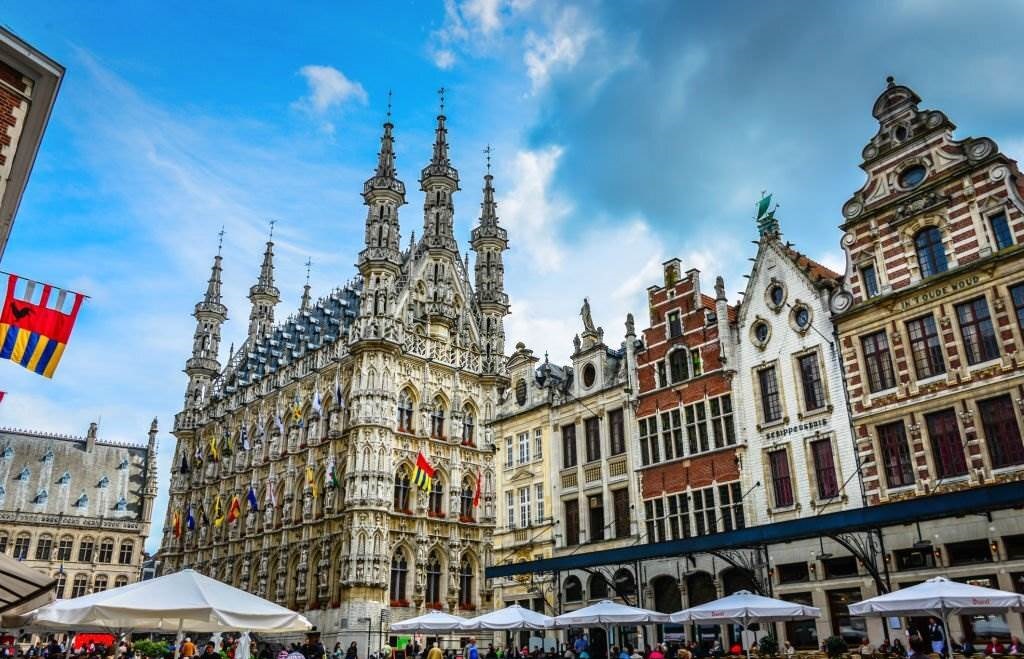
Historical Stadhuis (Town Hall) and Cafes in the Grote Markt in Leuven Belgium – Best Time to Visit Europe
If you’re discussing travel benefits before or after summer, weather and crowds are almost the same in spring or autumn. The Mediterranean region is generally green in spring but is dry in autumn, the Alps are the best for early fall Hiking practitioners, and most good Hiking trails are covered in snow until late spring. On the budget note, remember that the round-trip ticket prices are determined by the departure date. So, if you travel during the high season and return late in the autumn (middle season), you can still pay a round-trip fee for the high season.
4-Off-Season
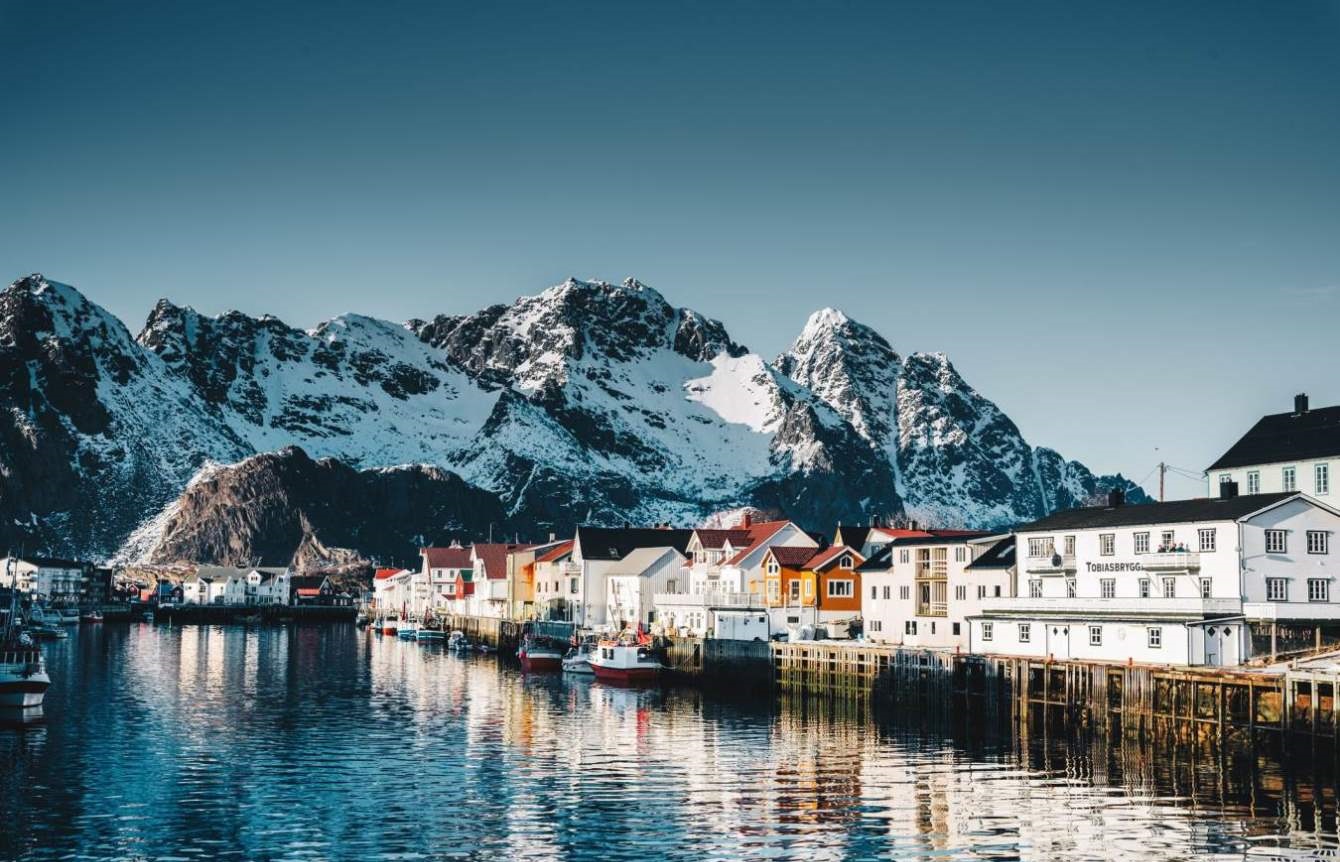
Scandinavian countries – Best Time to Visit Europe
The best of this season is that Europe is empty of crowds, where you will find only the local residents and you can enjoy all the Europe countries on your own with less budget. Everything from flights that are hundreds of cheaper Dollars than other seasons due to the lack of crowds heading to Europe. Even beautiful and luxurious hotels are cheaper during this season. You will find lots of empty rooms so you can choose the room you like and therefore you will feel the most comfortable and always be able to compromise, get good deals and save money which doesn’t happen in the rest of the seasons, but you should be ready for any kind of weather, winter weather cannot be expected so you have to bring lots of winter clothing and raincoats, so it’s up to you to decide if you want to visit Europe during this cold season or not.
Tips for the Off-Season:
1-Expect to Pay Less Often

the cathedral of Amiens is the largest one in France. View from the typical district of the Hortillonnages – Best Time to Visit Europe
Off-season ticket prices are often cheaper by hundreds of dollars. Many luxury hotels reduce their prices for travelers, and hotels’ budgets will have a lot of vacancies, while some small or rural accommodations may be closed, some still open places are usually empty and more comfortable. For major cities such as Berlin, Scandinavian, and Brussels, business centers are more crowded with corporate travelers and more expensive in the off-season.
2-Beware of Shorter Hours
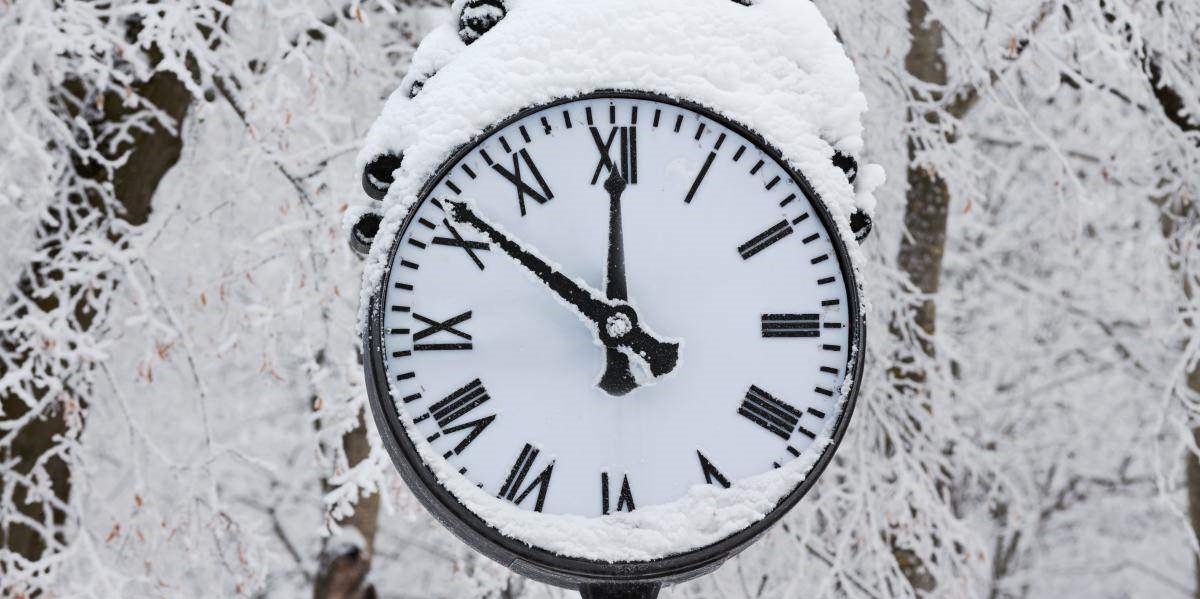
Beware of Shorter Hours in Europe – Best Time to Visit Europe
Take advantage of the limited hours of the day. Some of the sights are fully closed this season, most of which operate in shorter hours, setting the closing time as the sun sets. Winter sightseeing is great in large cities, which are vibrant all year round, but more frustrating in small tourist cities that can be particularly quiet, with the closure of restaurants and attractions, in December most of the beach resorts were closed as narrow as canned hams. The wonderful evening atmosphere in Europe continues all year round in the south, winter streets are empty in the north in the evening, Tours in English are common in summer, rare in this season when most visitors are indigenous. Tourist information offices are usually open throughout the year, but their opening hours are shorter in winter.
3-Prepare for Any Kind of Weather

Tree Explain all Year Weather Seasons Prepare for any kind of weather – Best Time to Visit Europe
Most of Europe is located in Canadian latitudes, so winter days are short. Darkness at 5 pm. The weather can be cold, windy, and even worse. You must take layers of clothing such as a rain jacket, a hat of wool, waterproof shoes, gloves, tall shoes, and an umbrella. Wear warm clothing, cold weather may be colder when you are outdoors, and cheap hotels can be cold with storms during this season.
Source https://travellemming.com/best-time-to-travel-to-europe/
Source https://expatexplore.com/blog/when-to-travel-weather-seasons/
Source https://www.planettraveladvisor.com/europe-travel-guide/best-time-to-visit-europe/